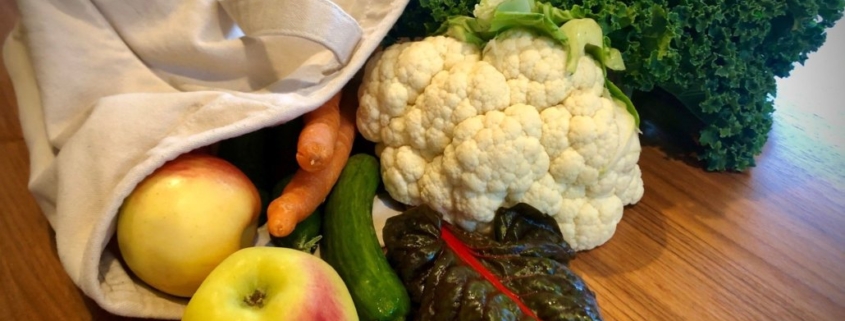
Reduce the Impact of What You Eat
In total – from land use to the supply chain – food production is responsible for about a quarter of global greenhouse gas emissions. The environmental impact of food production doesn’t stop there.
Habitat loss occurs when lands are cleared to grow our foods, and air and water can be polluted by chemicals and nutrients used as pesticides and fertilizers. Adding insult to injury, about a third of all food produced is wasted. We all need to eat, but we must do so in a way that reduces the impacts.
Reduce the carbon footprint of what you eat
All food are not created equal as far as a carbon footprint is concerned.
The most significant thing you can do to reduce the carbon emissions associated with the food you eat is to eat less meat and animal products, especially red meats and cheese. Because cows produce methane as part of their digestion process, beef and dairy have some of the highest greenhouse gas emissions. Learn more about why certain foods have a greater impact and about the carbon footprint of different foods.

If everyone takes the simple small step of committing to a day each week that you don’t consume meat, it can make a difference. Here are some recipe inspirations from Bon Appétit for your meatless Mondays (and Tuesdays, Wednesdays… if you are so inclined).
Another way to reduce the carbon footprint is to eat local. Transporting food around the globe adds to its carbon footprint. Try to source food near where you live. It is great for your local economy and community and better for the environment (try the 100-mile diet). A great way to eat local is shop at a nearby BC farmer’s market. The map below links to an interactive map to help you one near you.



You can eat local and support community farmers by joining a local Community Supported Agriculture (CSA) group and signing up for CSA boxes. Find one in your area, here is a list of some on Vancouver Island.
Eating local also means eating with the season. Stick with BC apples and pears in winter and skip the summer fruit that has been brought in from the southern hemisphere. Our BC peaches and strawberries will be that much sweeter when you have been waiting for them!
Reduce food waste
Food waste is a major problem. Here’s some food for thought: ending global food waste could reduce greenhouse gas emissions by 6-8%, and the average Canadian household spends over $1700 on food that is wasted each year. If that motivates you to reduce the food wasted in your home, here are some tips and suggestions.
- Carefully plan the food you buy and use up leftovers.
- Avoid buying more than you or your family can eat before it spoils.
- If you do one big grocery shop a week, use the fresh meat/seafood and more delicate produce first and then rely on pantry and freezer staples for the end of the week.
- Store your food to prevent spoilage. Keep you fridge below 4°C/40°F and your freezer at -20°C/0°F; store foods in sealed containers; and keep tomatoes, bananas and apples away from other fresh produce as they can release ripening chemicals, which may spoil other produce.
- Revive wilting vegetables (think: floppy carrots, lettuces and celery) by soaking them in cold water.
- Use your freezer to extend storage life. Freezer is a great way to store meat bought in bulk or preserve seasonal fruit and vegetables.
- Use ‘best before’ dates as a guide. The dates are typically conservative and the food is often fresh longer than indicated. If it looks and smells alright, it is.
- Use bones from a roast or rotisserie chicken and/or vegetable scraps to make broth.
- Re-purposing older foods: turning stale bread into croutons or bread crumbs, or using past their prime vegetables in soups.
- And compost those unavoidable scraps!
Photo credit: Maria Cantanzaro, Nicole Christiansen
